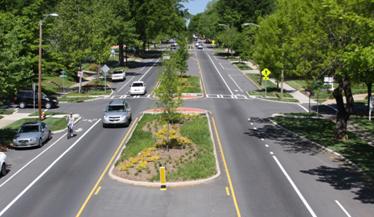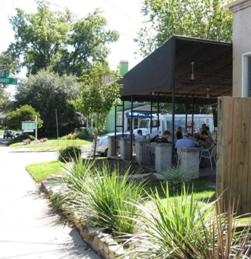A biweekly newsletter with public space news, resources, and opportunities.
A curated dispatch on all things public markets plus the latest announcements from the Market Cities Program.
I’m a pedestrian before I’m a driver, a rider, a passenger, a worker, or a shopper. I have to walk through public space to get anywhere, and I prefer walking where there are other people, comfortable sidewalks, and crossable streets. Plants, diverse businesses, and the possibility of running into friends are bonuses. Streets built just for cars undermine all of these elements of great walks and great places.
Via our Rightsizing Streets Guide, Project for Public Spaces promotes rightsizing as a means of improving streets for all users and creating a sense of place. Rightsizing improves safety and accessibility for walkers, bikers, and drivers by reconfiguring the street’s space to match the needs of the street’s community. Rightsizing is often critical to the cultivation of streets as places, in which streets provide for safe and enjoyable human experiences and foster inclusive, healthy, and economically viable communities.

These case studies illustrate that rightsizing can help activate a corner by creating a plaza, transform a corridor for blocks or miles by encouraging pedestrians and bicyclists, and improve access to local businesses, neighbors, and other attractions.


Each rightsized street was improved for pedestrians, and most created bike lanes as well, with minimal adverse—and often positive—impacts on vehicle operations. While vehicular transportation is important, our streets should welcome people using many different modes. Youth, some elderly, and many in between are unable to drive, but happy to walk and bike when it’s safe and pleasant. Further, many may prefer to walk or bike for their health, convenience, environmental concerns, or social reasons. By allowing a child to bike to school, a bike lane provides autonomy for the child (and the parent), and improves the atmosphere of that corridor. By calming the traffic next to that bike lane, the street is made safer for all. Of course, street design is not all there is to Placemaking, and not every rightsizing effort is perfectly aligned with its neighborhood’s desires or needs. However, rightsizing is often a critical component of a community’s Placemaking strategy.

Rightsizing projects tend to use before and after measurements of success that come from traditional traffic engineering priorities like reducing injuries, the number of speeding cars, or travel delay. Rightsizing succeeds by these measures, but they only hint at the fundamental place-centered outcomes of such projects: enabling thriving communities. Safety and mobility offer support to, but are different than, our more basic and fulfilling daily activities: shopping, socializing, eating, learning, recreating, game-playing, bench-sitting, people-watching, and all of the many other experiences that are more frequent and better in successful public spaces. We would be well served by more documentation of these activities in addition to the standard safety and mobility metrics. Streets and sidewalks are our most common public spaces. Rightsizing is a major way to activate these spaces and build communities.
The rich text element allows you to create and format headings, paragraphs, blockquotes, images, and video all in one place instead of having to add and format them individually. Just double-click and easily create content.
The rich text element allows you to create and format headings, paragraphs, blockquotes, images, and video all in one place instead of having to add and format them individually. Just double-click and easily create content.
Body Text Body Link
The rich text element allows you to create and format headings, paragraphs, blockquotes, images, and video all in one place instead of having to add and format them individually. Just double-click and easily create content.
Here is some highlighted text from the article.




Headings, paragraphs, blockquotes, figures, images, and figure captions can all be styled after a class is added to the rich text element using the "When inside of" nested selector system.
Headings, paragraphs, blockquotes, figures, images, and figure captions can all be styled after a class is added to the rich text element using the "When inside of" nested selector system.
Headings, paragraphs, blockquotes, figures, images, and figure captions can all be styled after a class is added to the rich text element using the "When inside of" nested selector system.

We are committed to access to quality content that advances the placemaking cause—and your support makes that possible. If this article informed, inspired, or helped you, please consider making a quick donation. Every contribution helps!
Project for Public Spaces is a 501(c)(3) tax-exempt organization and your donation is tax-deductible within the guidelines of U.S. law.